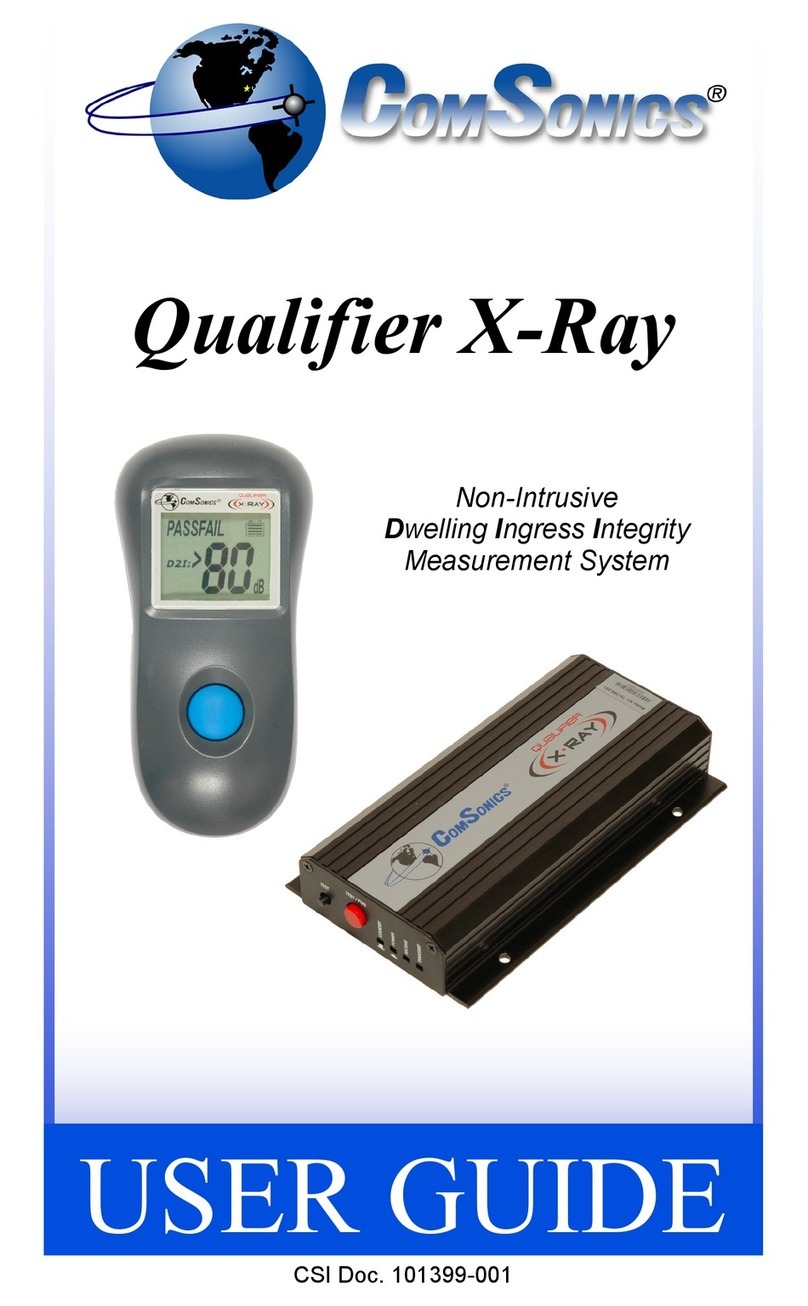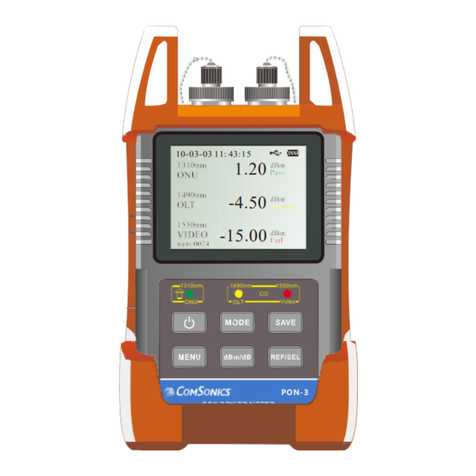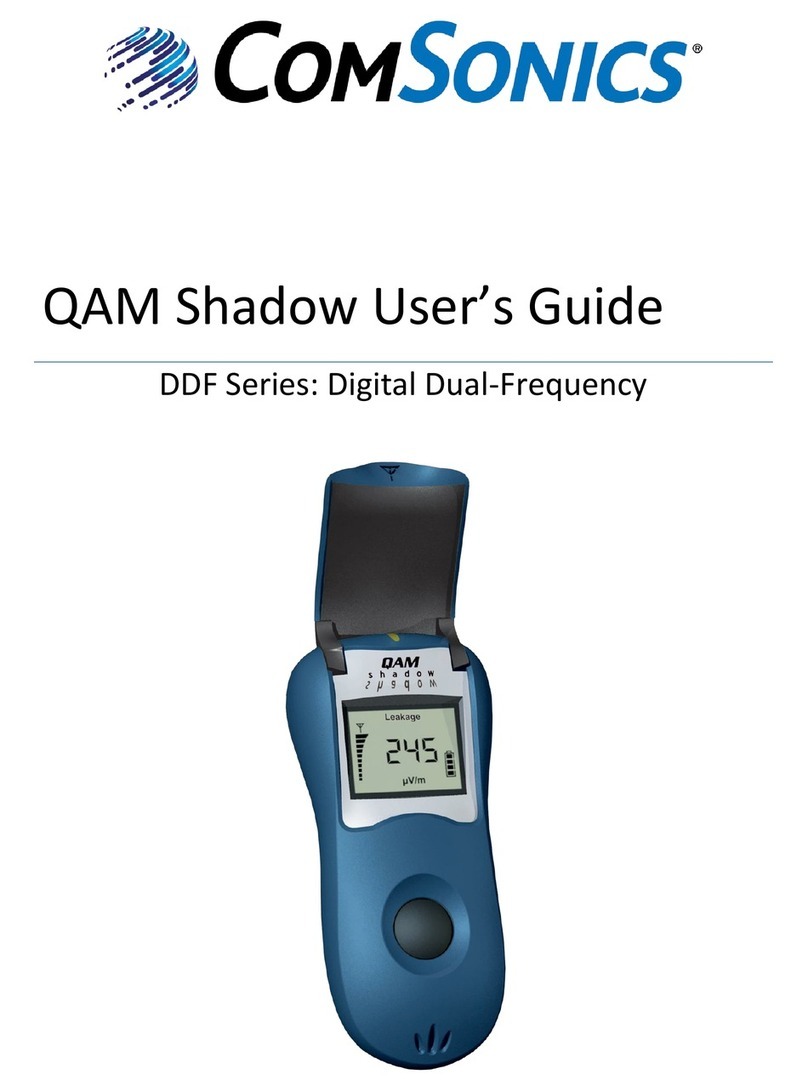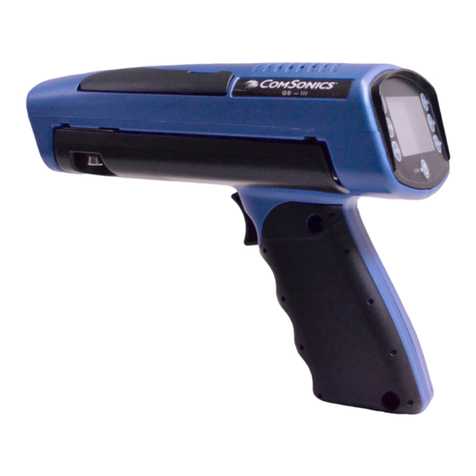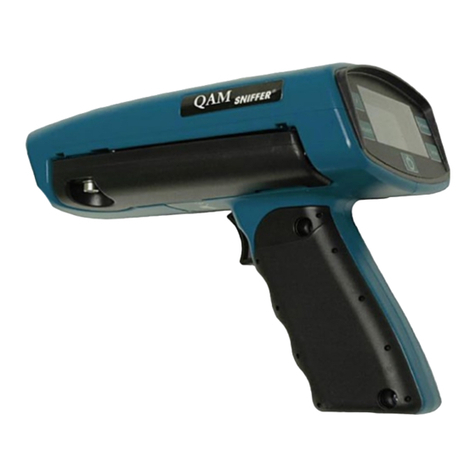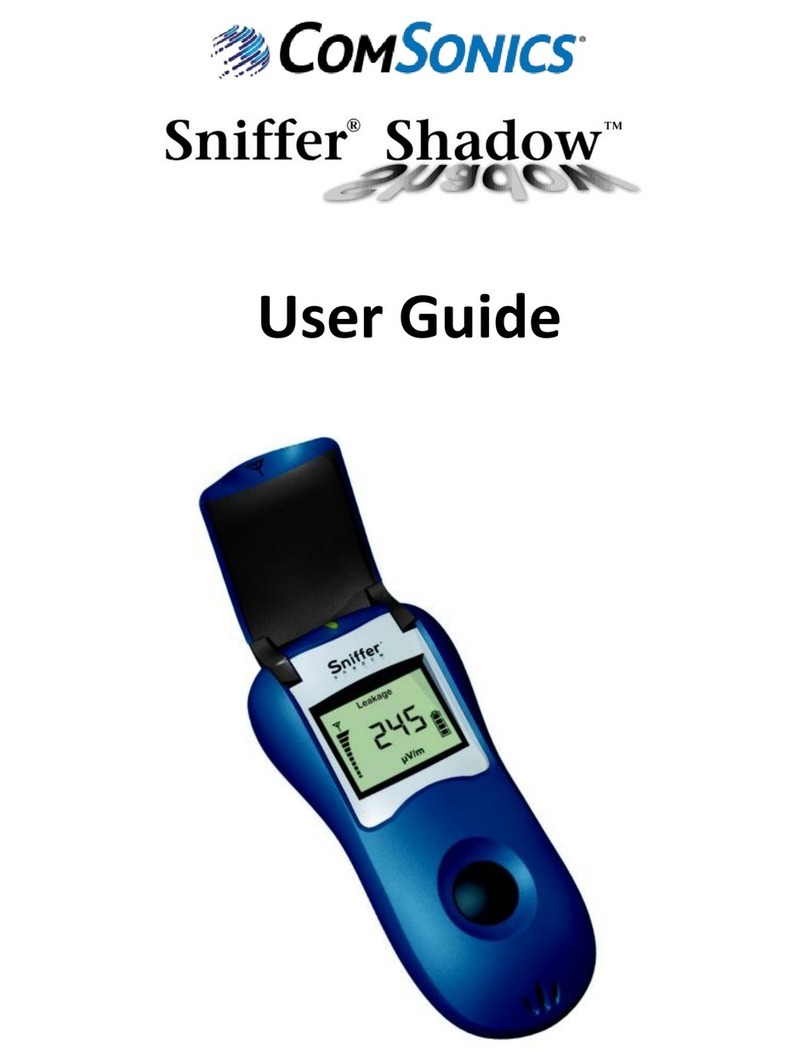
Warranty
ComSonics, Inc. warrants this product to be free of material and workmanship defects for a period of one year
from the original date of shipment.
Remedies provided under Warranty are exclusive and in lieu of all other warranties express or implied. The
liability to ComSonics is limited to product repair or replacement at the discretion of ComSonics. ComSonics
shall not be held liable for any incidental or consequential damages.
The following are not covered by this warranty:
1) Parts or components not supplied by ComSonics, or parts or components that have been modified.
2) Any product or part failure that results from accident, abuse, misuse, neglect, or unauthorized repairs or
modifications by individuals other than ComSonics personnel.
3) Failures caused by use of this product in extreme climates or moisture conditions.
4) CyberTek Qualifier Battery Pack
Technical Support
ComSonics maintains a Technical Support Service for customer convenience. Should the need arise, contact a
Technical Support Representative by telephone at 1-800-336-9681 or 1-540-434-5965; Fax at 1-540-432-9794;
or Email at tech-support@comsonics.com.
Return Information
Products returned for repair, calibration, etc. must be safely packed. Please enclose information on the reason
for return. Ship the material prepaid.
All material in this manual is the property of ComSonics, Inc. and is protected under the United States
copyright law. No material shall be reproduced or used in any form or by any means (graphic, electronic, or
mechanical, including photocopying, recording, taping, or information storage and retrieval systems) without
the written permission of:
ComSonics, Inc.
1350 Port Republic Road
Post Office Box 1106
Harrisonburg, Virginia 22801 USA
Phone: (540) 434-5965 USA Toll Free: (800) 336-9681
Fax: (540) 434-9847
Internet: www.comsonics.com
Agency Notice
Changes or modifications not expressly approved by the manufacturer could void the user’s authority to
operate the equipment.
FCC ID: PYN12002A vehicle mounted device
FCCID: PYN22002Bhandhelddevice
This device complies with Part 15 of the FCC Rules. Operation is subject to the following two conditions: (1)
this device may not cause harmful interference, and (2) this device must accept any interference received,
including interference that may cause undesired operation.
This Class B digital apparatus complies with Canadian ICES-003.
Cet appareil numérique de la Classe B est conforme à la norme NMB-003 du Canada.
CyberTek Qualifierand WindowLiteare trademarks of ComSonics, Inc.
2002 ComSonics, Inc. All Rights Reserved
Document No. 101268-001 Rev. C unreleased












